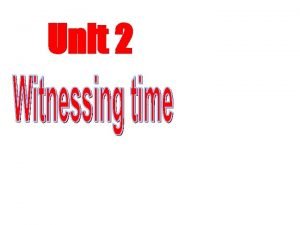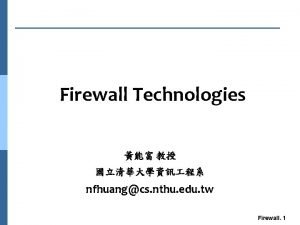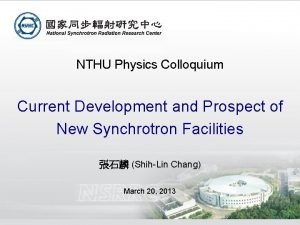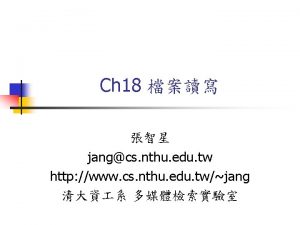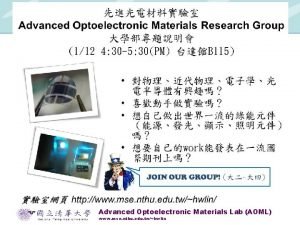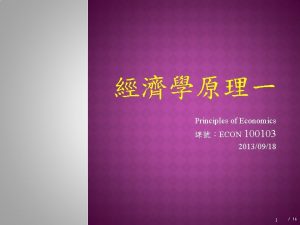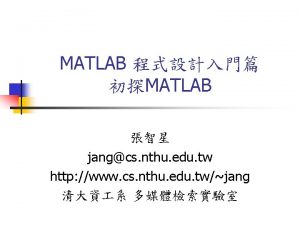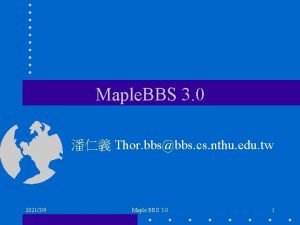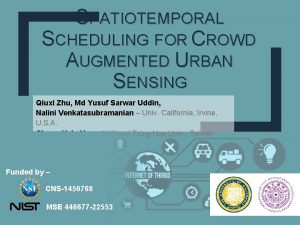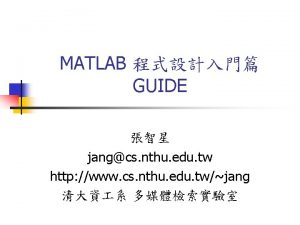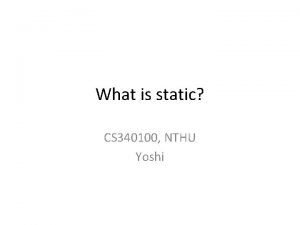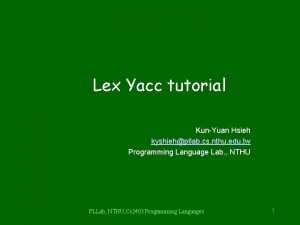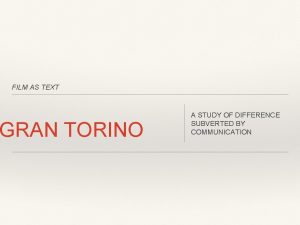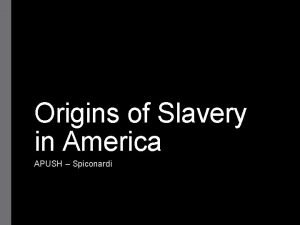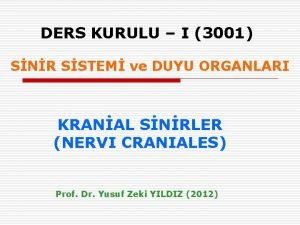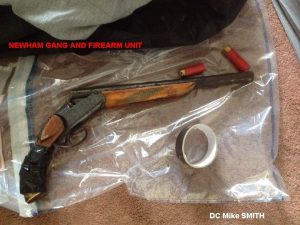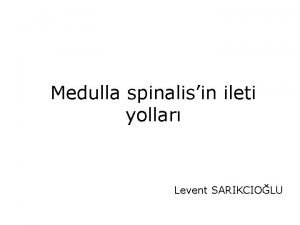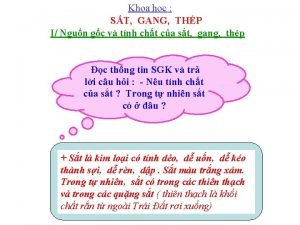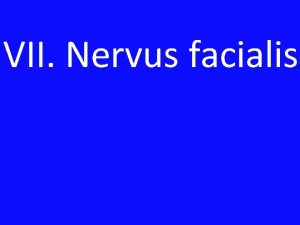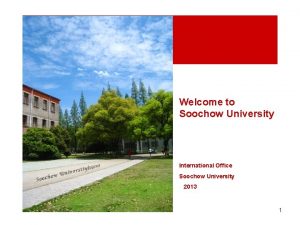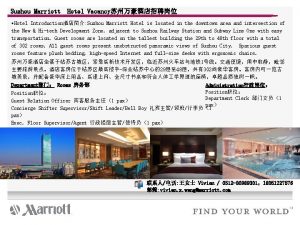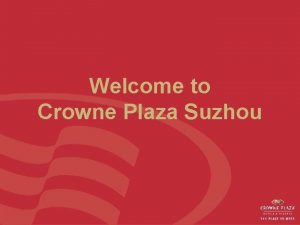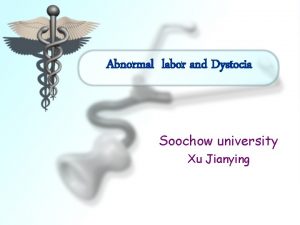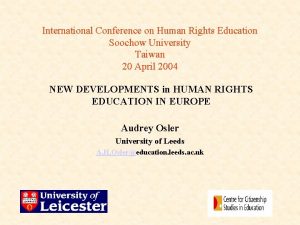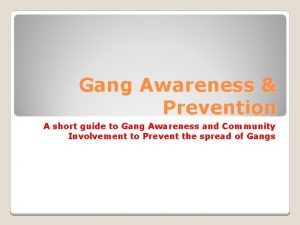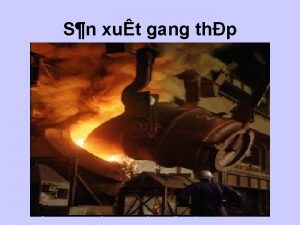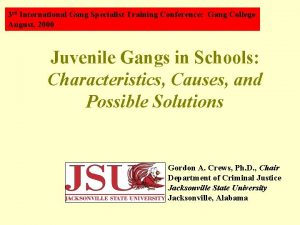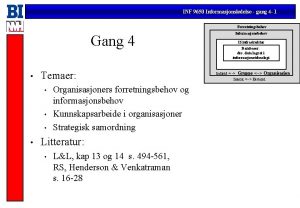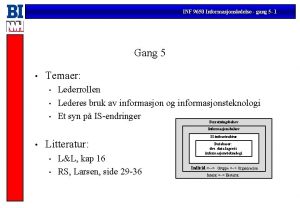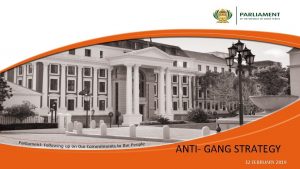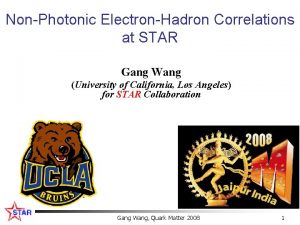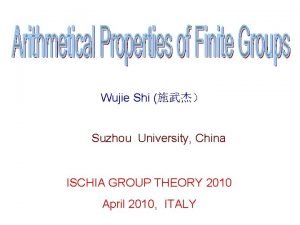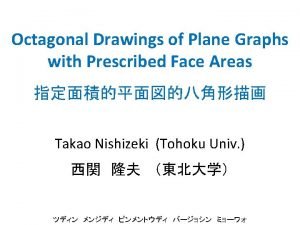Speaker Wang Gang Soochow University Suzhou NTHU Hsinchu
























- Slides: 24

Speaker: Wang Gang (王钢) Soochow University, Suzhou NTHU Hsinchu 2015

Story starting from SSP---Drude model Drude–Lorentz model: Classical particles bouncing on impurities Disorder hinders, does not cancel, conduction conductivity

Story starting from SSP---Anderson model 【citations>5000!】

Old, but still thriving After more than 50 years of AL, this field is still active and growing. Especially, around 2008 a series of experimental observations of AL. light waves in transverse scheme matter waves in optical potentials 2 D 1 D z x Segev (2007), Silberberg (2008) Aspect, Inguscio (2008)

Old, but still thriving ultrasound in 3 D elastic networks Page and van Tiggelen group (2008) quantum chaotic systems Delande and Garreau group (2008)

Old, but still thriving ultrasound in 3 D elastic networks quantum chaotic systems 1. Quantum kicked rotor, proposed by Fishmann et al. . 2. Localization in k space 3. Deterministic disorder, different from the conventional scenarios Page and van Tiggelen group (2008) Delande and Garreau group (2008)

Scheme of Disorder Z. Y. Liu et al, PRL 80, 956 (1998) lattice site n random number, e. g. , box distribution, Deterministic disorder, e. g. , Gaussian distribution kicked rotor, Fibonacci sequence, quasicrystals

Aubry-Andre-Harper model —Simple model, but rich physics Modulation of the lattice at an incommensurate frequency: bn l Lattice site n 1. 2 D lattices immersed in magnetic field, firstly proposed by Harper(1955), then studied by Hofstadter(1976), Aubry(1980), citations>3500 2. Topological transport, famous TKNN (1982) 3. Quantum fractals, very HARD to observe 4. Anderson transition 5. Many body localization

Aubry-Andre-Harper model —Simple model, but rich physics Modulation of the lattice at an incommensurate frequency: bn l Lattice site n AA model Anderson model 1 D Anderson model: smooth decrease in localization length. Infinite systems are always localized. AA model: A localization phase transition at λ=2 all eigenmodes turn from extended to localized Aubry, S. & André, G. Analyticity breaking and Anderson localization in incommensurate lattices, Ann. Israel. Phys. Soc. 3, 133 (1980)

Self-dual quasiperiodic lattices Ø Self-duality original form: dual form: Ø Quasiperiodic (discrete) lattice: a indicates the ratio between the period of QP potential and the underlying periodic lattice Ø Different from the quantum harmonic oscillator: no scattering, no interference between paths

Self-dual quasiperiodic lattices Metal-insulator transition

Experiments of AL Ø Here another kind of Anderson localization transition should be mentioned, quasiperiodic (incommensurate) lattices with deterministic disorder Silberberg et al. , PRL 103, 013901 (2009) Inguscio et al. , Nature 453, 895 (2008)

Question Common wisdom – no coexistence of mobility edges in self-dual incommensurate lattices. Or in other words, all the states localize/extended simultaneously. Is that so? ? ? self-duality = pure spectrum S. Aubry & G. André, Ann. Israel. Phys. Soc. 3, 133 (1980)

Question Common wisdom – no coexistence of mobility edges in self-dual incommensurate lattices. Or in other words, all the states localize/extended simultaneously. Is that so? ? ? self-duality = pure spectrum

New quasiperiodic self-dual model After Fourier transformation: 1. Multiple incommensurate modulations 2. Next-nearest-neighbor hopping 3. Remain self-dual under 4. Study the model in the photonic lattices because of the experimental realization

Localization properties 图片换掉 l=0. 5

Localization properties 400 550

Global phase diagram rescaled with 4/l l linear scale

Localization length

Diffusion of light waves

Coexistence phase II l 1 Coexistence phase I 0 Pure Delocalization 0 100 200 300 2 400 500 0 200 300 400 2 0 500 4 (d) Coexistence phase II 0 600 Coexistence phase II l 2 Coexistence phase I 1 0 Pure Delocalization 0 300 400 500 600 0 100 200 300 400 mode number 500 400 500 600 Coexistence phase II 2 1 200 300 (f) 3 Coexistence phase I mode number 200 4 1 100 mode number (e) 3 2 0 Pure Delocalization mode number 4 l 100 Pure Localization 1 Pure Delocalization 0 600 mode number 3 Coexistence phase I 1 (c) 3 Coexistence phase II 3 2 4 (b) l 3 l 4 (a) l 4 Coexistence phase I Pure Delocalization 0 100 200 300 400 500 600 mode number Phase diagram of the self-dual models for the inverse of various metallic means

Proposed experiments photonic lattices (c)

Concluding remarks • self-duality of quasiperiodic lattices does not necessarily mean the pure spectrum • New self-dual model to offer MB? PRL 114, 146601 (2015) • Much more to offer, e. g. , many body localization, especially around the mobility edges • Hunting the “butterfly”

Disorder is beautiful!
 Suzhou wanli knitting
Suzhou wanli knitting Kempinski suzhou
Kempinski suzhou Suzhou goldengreen technologies ltd
Suzhou goldengreen technologies ltd Vinno technology
Vinno technology Suzhou gardens
Suzhou gardens Nthu vpn
Nthu vpn Nthu physics
Nthu physics Nthu internship program
Nthu internship program Nthu wk
Nthu wk Mse nthu
Mse nthu Nthu econ
Nthu econ Matlab nthu
Matlab nthu Bbsbbs
Bbsbbs Gplot matlab
Gplot matlab Ucinet mobile access
Ucinet mobile access Matlab nthu
Matlab nthu Ee class nthu
Ee class nthu Lex yacc
Lex yacc Gran torino quotes
Gran torino quotes Gang system apush
Gang system apush Gang oticum
Gang oticum Newham gangs
Newham gangs Medulla spinalis funiculus
Medulla spinalis funiculus Sự khác nhau giữa gang và thép
Sự khác nhau giữa gang và thép M. digastricus venter anterior innervation
M. digastricus venter anterior innervation




